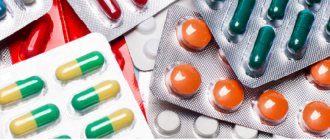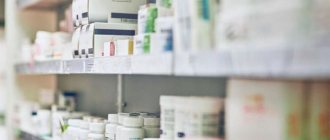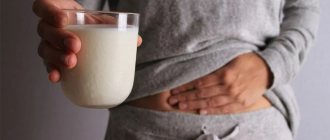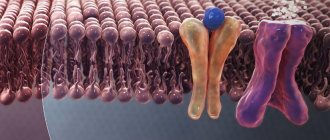Cold season means not only tea with honey, but also a course of antibiotics for various infections. Such a course can often harm the digestive system, although it helps to heal. Doctors prescribe medications that soften the effects of antibiotics, but we can additionally help our gastrointestinal tract and introduce probiotic foods into our diet, which will help revive the beneficial bacteria in our intestines. Please note that the tips and list of useful products below do not replace the recommendations of your doctor and in no way replace the medications prescribed to you. They can only help you recover faster from illness.
What should you eat during and after a course of antibiotics, and what is better to exclude, says Anna Ivashkevich, nutritionist, clinical psychologist-dietitian, member of the National Association of Clinical Nutrition :
“We all know that antibiotics have a strong effect on the microflora of our intestines; they literally kill both the bad and the good. To minimize the likelihood of side effects, you need to eat a certain type of diet and include foods that contain probiotics, fiber and inulin in your diet. These substances are needed to maintain a good balance of bacteria in the body.
During a course of antibiotics
The most beneficial probiotic is sauerkraut. We add baked apples, kefir, homemade yogurt, and sour cream to the same list.
Important! Pay attention to the expiration date of all fermented milk products. It should not be more than 2 weeks.
Jerusalem artichoke, bananas, onions and garlic will help create a favorable atmosphere. These are prebiotic products that improve intestinal microflora. But you need to be careful not to introduce more than 8-10 g of each product per day into your diet. Recommendations may vary in each specific case, everything is individual and depends on how severely the digestion is impaired.
Protector against colds. 7 simple foods rich in zinc Read more
Nutrition and antibiotics: 7 rules
1. Drink only water
Citrus juices, especially grapefruit, affect the chemical composition of the antibiotic and increase the absorption of the drug from the intestines, which can cause an overdose with all the ensuing consequences. It is best to drink the antibiotic with plain water without gas at room temperature. It is advisable to drink 200 ml of water (almost a glass) with the antibiotic to reduce the risk of nausea and other stomach problems.
2. Kefir and yogurt after 3 hours A number of products, on the contrary, interfere with the absorption of medications, making their use useless or ineffective. This applies to milk and dairy products: the calcium contained in them reacts with many drugs, forming water-insoluble salts. Thus, the antibiotic is only absorbed by 50%. However, you should not completely give up dairy products; they can be consumed 3 hours before or after taking the medicine.
3. Limit fats and proteins
Fatty foods containing saturated fatty acids retain the antibiotic in the stomach, modifying its composition to some extent. Once in the intestines, it no longer has the necessary therapeutic effect. Food containing protein not only binds medications, but also puts unnecessary strain on the liver and kidneys. But reducing the amount of protein in the diet also reduces the effectiveness of treatment. The solution is moderate consumption of fatty and protein foods. It is also worth considering that some antibiotics should only be taken on an empty stomach, while others should only be taken on a full stomach. This is indicated in the instructions for the drug; the doctor should warn you about this.
4. You can drink alcohol, but you don’t need to.
Theoretically, you can drink, but not much - moderate drinking does not prevent most antibiotics from fighting pathogenic bacteria. However, alcohol can increase the side effects of antibiotics. Liver cells will be the first to receive a double blow - both from alcohol and from antibiotics. You may also experience a severe headache, stomach cramps and vomiting, excessive sweating, rapid heartbeat, and increased blood pressure. It is permissible to drink alcohol only 3 days after a course of antibiotics.
5. Products for restoring microflora
The main task of antibiotics is to kill pathogenic bacteria. But beneficial intestinal bacteria are often included in the distribution. As a result, the balance of microorganisms is disrupted and symptoms such as diarrhea, bloating, and flatulence appear. To maintain intestinal microflora, doctors usually prescribe probiotics. They are also found in fermented foods that can help improve gut health during and after antibiotic therapy, such as sauerkraut, pickles (without adding vinegar), Japanese miso soup, fermented soy milk, and fermented milk products such as natural yogurt and kefir. There should be at least 3 hours between taking the antibiotic and the probiotic.
6. Vitamins and minerals
Antibiotic therapy can lead to impaired absorption of vitamins, as well as faster decomposition. Therefore, your diet should include foods rich in vitamins and minerals. They are found in raw vegetables and fruits. Sources of vitamin C: parsley, red pepper, tomatoes, black currants, rose hips. Essential microelements and B vitamins are found in whole grain cereals, which are found in dark bread, brown rice, oatmeal, wholemeal pasta, buckwheat and barley.
7. Fiber after treatment
While taking antibiotics, you should avoid foods rich in fiber as they can interfere with how your stomach absorbs the medicine.
But after therapy, fiber stimulates the growth of beneficial bacteria in the intestines and promotes proper digestion. Therefore, lean on artichokes, berries, beans, broccoli, and lentils. Published: April 23, 2021
After completing the course
When antibiotic treatment is completed, it is necessary to help the body cope with its consequences. Here we also need probiotic products that improve digestion.
I would advise you to include several products from the list in your diet, you can do everything:
- sauerkraut;
- artichokes;
- spinach;
- whole grain cereals;
- yoghurts, but always natural, without adding toppings;
- kefir;
- heat-treated fruits and vegetables;
- Brussels sprouts;
- parsley;
- sea buckthorn
I will highlight sea buckthorn berries separately. When used correctly and in moderation, this product normalizes the digestive system, improves metabolism, helps in the treatment of ulcers and gastritis, and relieves heartburn. You can brew teas with berries, make compotes or jelly from sea buckthorn.
You can drink 1 tbsp of sea buckthorn oil at night. l. as a medicine. It will help heal and restore the intestines.
Seasonal product. How to properly prepare rose hips Read more
Medicines and products: how to combine correctly?
text: Irina Chepaikina
Expert
Irina Marchenko,
Candidate of Pharmaceutical Sciences,
pharmacist
It turns out that we can significantly speed up our recovery if we take into account the compatibility of medications and food. At the same time, unsuccessful combinations can completely neutralize the effect of the drugs and even seriously harm your health. It is very important to choose the right diet when using medications. After all, our body is a large biochemical laboratory.
Dangerous ties
Let's start with the most famous example of adverse drug-food interactions. We are talking about drugs from the group of monoamine oxidase inhibitors, which are often prescribed to treat depression. In this case, you should temporarily avoid avocado, chocolate, bananas, red wine, cheese, soy and smoked products. The fact is that the listed products contain tyramine, which, under the influence of monoamine oxidase, is converted into an inactive form and accumulates in the body. This leads to increased blood pressure and a severe headache. Another extremely undesirable combination is milk and vitamin D. Dairy products promote the absorption of drugs based on this vitamin, which poses a danger to the central nervous system.
When taking diuretics, you need to keep in mind that some of them help remove potassium from the body. This is dangerous for the heart and can cause arrhythmia. During treatment with these drugs, dried fruits (dried apricots, figs) and bananas are very useful, because they contain a lot of potassium.
If your doctor has prescribed anticoagulants to prevent blood clots, try to eat less Brussels sprouts, cauliflower, liver, soy, walnuts and zucchini. All these products contain quite a large amount of vitamin K, which acts directly opposite to anticoagulants, bleeding may occur.
Grapefruit can be called the king of incompatibility. There are so many drugs with which it “conflicts” that some researchers advocate special labeling of products containing this fruit. The fact is that certain components of grapefruit juice block the CYP3A4 enzyme, which is involved in the metabolism of many modern drugs. Thus, the concentration of the drug in the blood may become unacceptably high, which is fraught with various complications. Even one grapefruit can increase the toxicity of antibiotics, enhance the effect of benzodiazepine sleeping pills, and lead to a sharp decrease in blood pressure in people taking antihypertensive drugs. The latter, however, mainly applies to drugs from the nifedipine group.
It is also not recommended to combine grapefruit juice with potency enhancing drugs due to possible increased toxicity. The same applies to statins - drugs that lower blood cholesterol levels. But don't despair if you really love grapefruits. One glass of juice or half a piece of fruit will not do any harm in most cases, although it is best to consult a doctor before starting treatment.
Exclude
While taking antibiotics and recovering from the course, you should exclude from your diet:
- grapefruit;
- alcohol;
- yeast and sugar (this means that you will have to give up flour products and sweets).
These products, firstly, interfere with the proper absorption of antibiotics, and can also cause nausea, abdominal pain and even heart rhythm disturbances. Antibiotic treatment can cause a yeast infection (candidiasis), and baked goods and sweets can make things worse.
What are antibiotics
Antibiotics are a huge group of drugs that are united by their effect on bacteria. They can act in different ways: destroy the cell membrane in bacteria, disrupt metabolic processes in them, etc. But the result is always the same: the bacteria loses the ability to maintain its vital functions and dies.
Such drugs are certainly useful in situations where harmful bacteria cause illness and even threaten life. But, alas, antibiotics do not have a selective effect and they act with the same “killing power” on both pathogenic and beneficial microorganisms. For example, those that populate the intestinal or oral mucosa and form local immunity.
Is it possible to remove antibiotics from milk?
This is only possible in laboratory conditions and only if it is known which antibiotic is present in the milk. Then you can choose a safe way to neutralize the antimicrobial drug without compromising the composition of the milk and its nutritional properties.
Therefore, if the purchased milk for some reason makes you suspect the presence of antibiotics, there is no point in boiling it. You can contact the SES or a private laboratory, where, using a test system to determine antibiotics in milk, specialists will confirm or refute your doubts. And if the suspicions were legitimate, it is better to refuse to consume products of this brand so as not to harm your body.
What antibiotics can be found in milk
Antibiotics in milk are represented by absolutely all drugs of this group that are used in veterinary medicine. These are penicillin, syntomycin, tetracycline, various cephalosporins, etc. - in general, more than 70 items.
Most often, broad-spectrum antibacterial drugs are used in veterinary practice. Such antibiotics are among the most effective for mixed infections (which is often observed in farm animals), but they are also among the most dangerous when it comes to the consequences.
How to determine the presence of antibiotics in milk
A truly accurate determination of antibiotics in milk can only be carried out using special test kits. The principle of operation of the test kit is based on competitive immunochromatographic determination of the presence of antibiotic residues, and can be designed to detect one specific antibiotic or several at the same time.
At home, the only available way to find out how safe the milk you buy is to conduct a ripening test. To do this, add one spoon of sour cream to a small amount of milk, then put the milk in a warm place. If there are no antibiotics in it, after a few hours (about 2 to 4), it will turn into yogurt. If the milk does not ferment at all or acquires a slimy and unpleasant consistency, something (and most often antibiotics) is preventing the normal fermentation of the milk.
How do antibiotics get into milk?
Animals, just like people, suffer from infectious diseases. And they also need treatment. Therefore, the detection of antibiotics in milk, even in high concentrations, is normal if the dairy cow has recently been treated with these drugs. But such milk cannot be used for the manufacture of dairy products. It is allowed as a raw material when the concentration of the antibiotic in milk is reduced to hundredths or even thousandths of a percent (depending on the drug used for treatment). Antibiotics are also sometimes used as a preventative measure when there is a possibility of mass infection of the herd during epidemics.
Milk that goes on sale can retain up to 90-100% of the antibiotics present in it at the time of milking, of course, if such milk is accepted at the factory. This is due to the fact that antibacterial substances are practically not destroyed and do not transform into other forms during sterilization and pasteurization.
In fermented milk products, milk with antibiotics is technologically unacceptable. And it’s not even about the special scrupulousness of manufacturers, but about the undesirable effect of antimicrobial agents: in their presence, fermentation does not occur at all or occurs incorrectly. Accordingly, if the concentration of antibiotics in whole milk is incorrectly determined and it enters the production line for cheeses, yoghurts, etc., then the entire batch may be unsuitable. Therefore, a high-quality test for antibiotics in milk protects not only the health of consumers, but also the economic stability of the enterprise.











